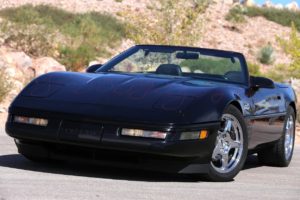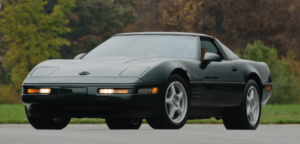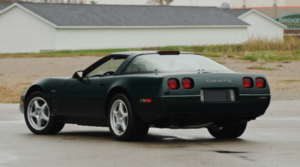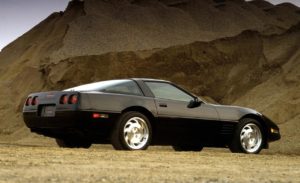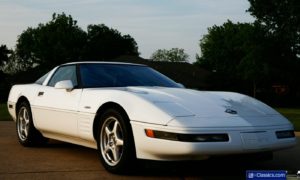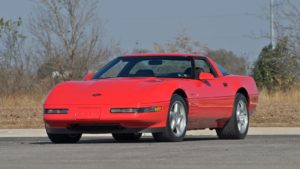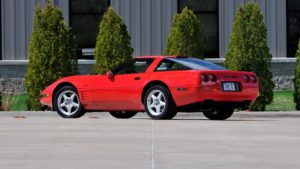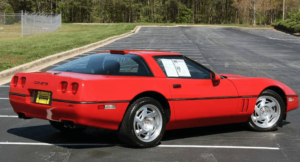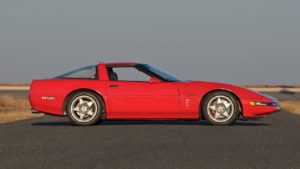Pricing: $36,185.00 (Coupe), $42,960.00 (Convertible)
Engine: 350CI, 300 Horsepower, Multi-Port Fuel Injected LT1 V8 Small Block Engine.
Transmission: 4-speed automatic (standard), 6-speed manual (optional)
Units Produced: 23,330
Available Colors: Arctic White, Admiral Blue, Black, Bright Aqua Metallic, Polo Green Metallic, Competition Yellow, Copper Metallic, Torch Red, Black Rose Metallic, Dark Red Metallic
Highlights of the year:
In 1994, General Motors announced that an all-new C5 Corvette was on track for the 1997 model year. In fact, much of the Corvette design team had been re-assigned to the C5 program and were already focused on testing the new model, which was why the C4 remained mostly unchanged for 1994.
That’s not to say that there weren’t any changes made in the 1994 model year
The LT-1 engine was bolstered up to include a more powerful ignition system for shorter starting times, especially in cold weather. Additionally, a new sequential fuel injection system was introduced for better throttle response, idle quality, overall drivability, and lower tailpipe emissions.
Matching the engine’s refinements was the Corvette’s first electronically controlled automatic transmission, which offered drivers smoother and more consistent shifting than the previous model’s all-mechanical four-speed. Additionally, a lockout switch was installed on the new automatic gearbox which required drivers to depress and hold the brake pedal before shifting out of “park”. This last addition was installed as a response to industry concerns regarding “unintended acceleration.” For its own part, the ZR-1 received a boost in performance to 405 horsepower (a fact which would eventually make the 1994-1995 ZR-1 Corvettes the most desirable and collectible of them all.)
There were no cosmetic changes made to the exterior of the 1994 Corvette. The only visible difference that differentiated the 1994 Corvette from earlier years was the introduction of two new colors – Admiral Blue and Copper Metallic (although Copper Metallic was limited to only 116 cars due to limited availability).
The interior of the 1994 Corvette received virtually no upgrades either, although a few standard options were added including a passenger-side airbag and knee bolster – both of which were introduced to help bring the Corvette into compliance with the second phase of the federal governments “passive restraint” safety requirements.
The most notable physical design change to the 1994 Corvette was the redesigned steering wheel. To most critics, the new design, which featured a simplified, two-spoke steering wheel, was actually considered a functional downgrade from its predecessor, which had featured spokes at the “10” and “2” positions in addition to the remaining two spokes which carried over into the 1994 design.
Despite the limited number of cosmetic and mechanical changes, the sale of 1994 Corvettes actually rose to 23,330 units despite a modest price increase to $36,185. Even with the increase in Corvette sales, the ZR-1 Corvette sales continued to suffer with only 448 units sold in 1994. Given the year over year decline in ZR-1 sales, it was announced by General Motors that 1995 would be the last year for their “King of the Hill”.
Photos of the 1994 Corvette
Sources:
https://www.corvsport.com/1994-c4-corvette/
https://www.corvsport.com/1994-c4-corvette-image-gallery/
